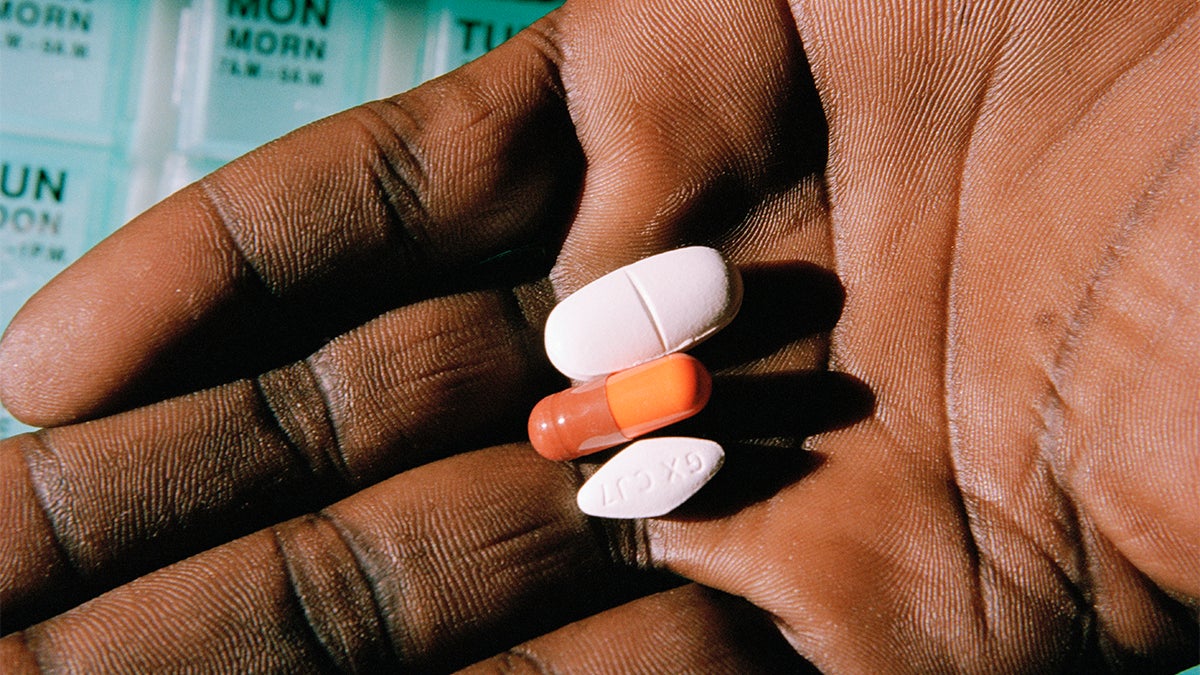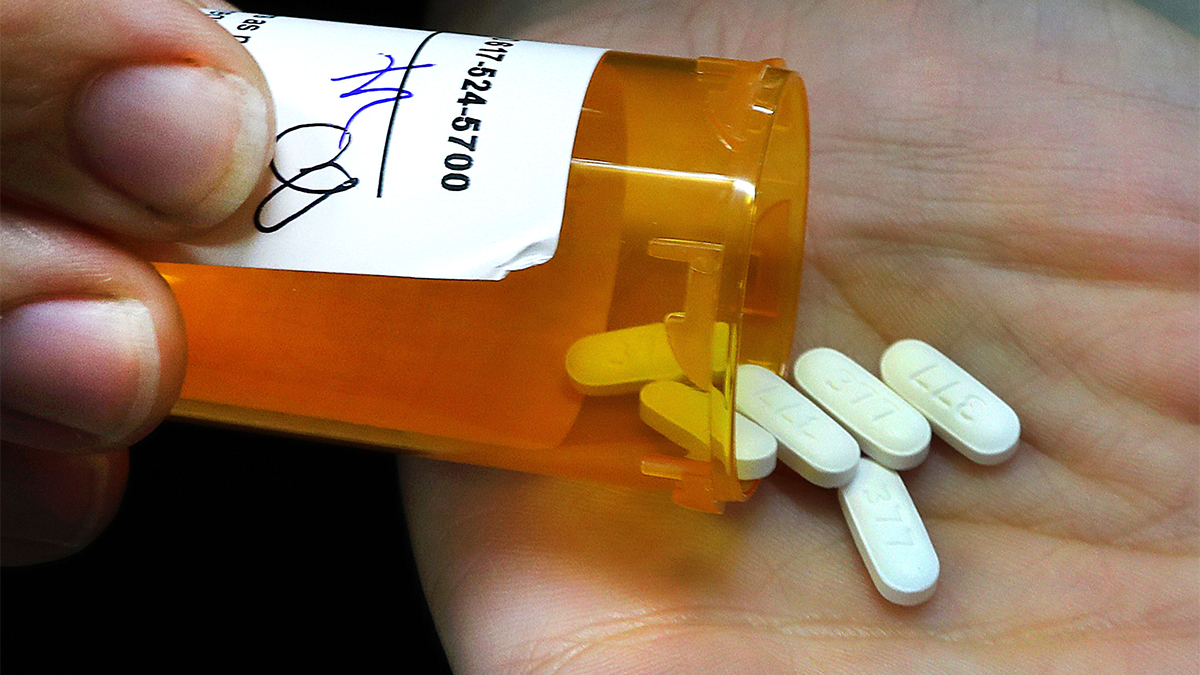Easy access to opioids sets some athletes up for addiction

In 2013, He was on his way to the major leagues with a 90 mile per hour fastball. Within three years, Carter Hope lost his way and his career.

How did Hope go from pitching in the Kansas City Royals’ minor leagues, to having his family lock up their possessions for fear of him pawning them to fuel his addiction?
A prescription opioid addiction.
According to The Athletic, Hope’s opioid journey started in the winter of 2014 after a friend introduced him to prescription opioids. Not long after, Hope found a supplier and showed up to spring training workouts intoxicated with the prescription.
The drugs had a horrible affect on his body and performance. His minor league earned run average went from 3.71 to 6.04. The Royals recommended he enter rehab. The club waited around for change.
But change never came. The Royals released him in 2016.
“I had been doing the opiates,” Hope said. “I didn’t look right. I wasn’t ready to be in a spring training situation. And I think they saw that,”
Hope returned home and started a journey to get his life back on track. It wasn’t easy. He sold his car and used the money to buy heroin. He totaled his new car while being on high on the drug.
“My flesh just craved it,” Hope said.
His mother realized how serious his addiction was when she saw how much money he spent on the drugs. She locked up her possessions because she didn’t want Carter pawning them to fuel his addiction.
“Living in prison,” is what Hope’s mother told The Athletic.
But he was mentored by a family friend, went to rehab and worked on his relationship with God. He takes medicine to curb his withdrawals.
The Royals invited him back, and he pitched for the team’s minor league affiliate in Wilmington again, in 2018.
According to the National Institute on Drug Abuse, the opioid addiction, including heroin and prescription pain relievers, is an epidemic is taking the 130 lives in the United States per day.
Although Hope survived his battle, his story resembles that of many whose lives have been impacted by opioids.
Where the problem starts and how it escalates
Opiates produce many effects in the brain, including the blockage of pain signals. That’s why they are used for pain management after serious surgeries. Along with the reduction of pain, many people feel happy and at ease due to the artificial endorphins opiates create. They feel a high.
The Hawaii Medical Journal states opiates trick the brain into stopping the production of natural endorphins.
According to the Mayo Clinic, when someone can’t naturally produce endorphins, they can become depressed without that happy feeling given by opioids. Nobody wants to be in pain or depressed. They find the cure in prescription opioids such as Oxycodone, Fentanyl and Hydromorphone.
That opiates cure the very problem they cause leads to one of the biggest issues with prescription opioids: the rate they are prescribed.
The National Institute of Drug Abuse states the number of prescriptions for opioids increased from 76 million to 207 million in the period from 1991 to 2013.
According to the Centers for Disease Control and Prevention, the peak for prescription opioids was reached in 2012. More than 255 million prescriptions were issued in the United States, resulting in a prescribing rate of 81.3 prescriptions per 100 people.
In 2017, the rate dropped to its lowest level in 10 years, with 58.7 prescriptions per 100 people. However, the problem with issuing the drug is still prevalent.
With more prescription opioids being issued, athletes get more than what they need. This leads to their addictions.
The NFL
The NFL has serious issues with its use of opioids.
According to a 2011 study done by researchers at Washington University’s School of Medicine, seven percent of former NFL players misused opioid painkillers. That was more than four times higher than the rate of the general public.
When athletes are playing, injuries and pain are common. Team doctors prescribe painkillers such as opioids. However, the rate at which they are distributed by team doctors is a problem.

One of those former players is Aaron Gibson. The former offensive tackle suffered chronic pain and depression after he retired, according to Bleacher Report. To cope, he took opioids. When he was in pain, Gibson took 120 opioid pills over three days. He spent $1,400 a month on the pills.
In 2014 Drug Enforcement Administration officers questioned the medical staff of several NFL teams for their irresponsible painkiller distribution, according to the New York Times.
A lawsuit has been filed by former NFL players against the NFL. The lawsuit arges the league illegally pumped them with strong drugs to keep them on the field. The Washington Post reported a lot of those drugs were opioids.
Eugene Monroe, a retired offensive tackle for the Jacksonville Jaguars and Baltimore Ravens, wrote about his experience with opioids.
In his 2016 Players’ Tribune article titled Getting Off the T Train, Monroe wrote about his use of opioids after every football related surgery. He believes the NFL’s reliance on opioids is not good due to its severe dependence.
On March 9, 2016, Monroe became the first active player in the NFL to advocate for the use of medical marijuana in replacement of opioids.
Student Athletes
Dr. Alan Cavaiola, psychological counseling professor at Monmouth University, told USA TODAY affiliate APP, “I can’t tell you how many young people I’ve seen, not only high school age but mostly college-age kids, who began (addiction) when they were prescribed Percocet or Vicodin or OxyContin in high school for injuries.”
A 2013 study from the University of Michigan stated 11 percent of high school athletes have used a narcotic or opioid.
The Massachusetts Technical Assistance Partnership for Prevention cited a 2013 study that stated 2 million high school athletic injuries occur per year. Typically the pain medication that is received for these injuries is prescription opioids. However, they are commonly misused, causing addiction.
According to Rivermend Health, the two factors that pose a risk for opioid addiction in teen athletes are the number of pills they take and the good feeling those pills give them.
Rivermend Health states that the common treatment for acute pain is a narcotic that should be taken for about two to three days. However, most prescriptions are written for 30 days. After the pain subsides, the happy feeling opioids give athletes becomes the focus. As a result, they keep taking the pills.
Because opioids are so strong, the development of an addiction does not take long. Michael’s House Treatment Centers states that a serious sign of addiction is when someone’s personal desire to stop taking opioids is not strong enough.
Another issue with teen athletes and their opioid use is how it leads to other drugs.
According to Sports Illustrated, Romano Montano played in Albuquerque’s (N.M.) Little League, and he pitched his way to success in high school. During his junior year, he had minor surgery on his foot, but with the help of OxyContin, he was quickly back on the field. After high school he had hoped to be selected in the annual baseball draft.
But, after he and his friends were accused of using a stolen credit card, he was kicked off the team in his senior year.
Depression set in, and he started abusing OxyContin. He became addicted.
Montano attended his high school graduation while high. His mother checked him into rehab, but he couldn’t get the addiction out of his system. So he turned to something cheaper that gave him the same feeling: heroin.
He hid the heroin use from his family well. They thought he was clean and had gotten his life back on track, until the evening of May 2, 2012.
That’s when he was found dead from a heroin overdose. The needle was still in his arm.
According to the National Institute on Drug Abuse, 70 percent of teens who abuse opioids use them alongside other drugs. This increases the chance for overdose significantly.
So what does this tell us?
Opioids impacted the lives of Carter Hope, Montano and former NFL players. But each story teaches different lessons.
Hope’s story teaches about recovery. While it can be a tough road, the road to recovery can be successful.
The retired NFL players teach about keeping those at a higher level accountable for what is being put in people’s bodies.
And Montano’s story is one of a great life and talent taken by the dangerous epidemic plaguing the country.
Katelyn Oates is a sophomore journalism major at Arizona State University.
Related Articles
Leagues being pushed to allow medical marijuana use for pain management


